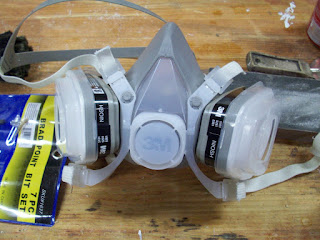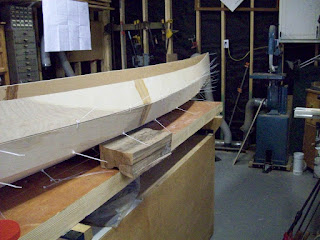I was noticing on another blog that when the person added filler to his epoxy it stayed about the same color as the wood. I wish I would have found that color filler when I was at the store. Mine causes the epoxy to turn dark brown and be very noticeable. With this guys boat you can even tell he put in epoxy. That would explain why I keep thinking that every other boat I see is built much better than mine. You just can’t see their epoxy.
Last night I cut out about 80-90% of the zip ties holding this rig together and nothing fell apart. There were a few places that I was not comfortable with how well the epoxy was hold so I left the zip ties in and added some more epoxy.
In one spot there was quite a large gap that I was shocked and pissed to see. It was not there before and I don’t know what I did to cause the gap now. I would have never left a gap this large and it will be quite visible.
Later I grabbed a file and started smoothing out some of the fillets which is tedious but not as bad as I thought it would be. I would say maybe one or 2 evenings of cleaning things up and I will be ready to apply the Fiberglass tape

















































